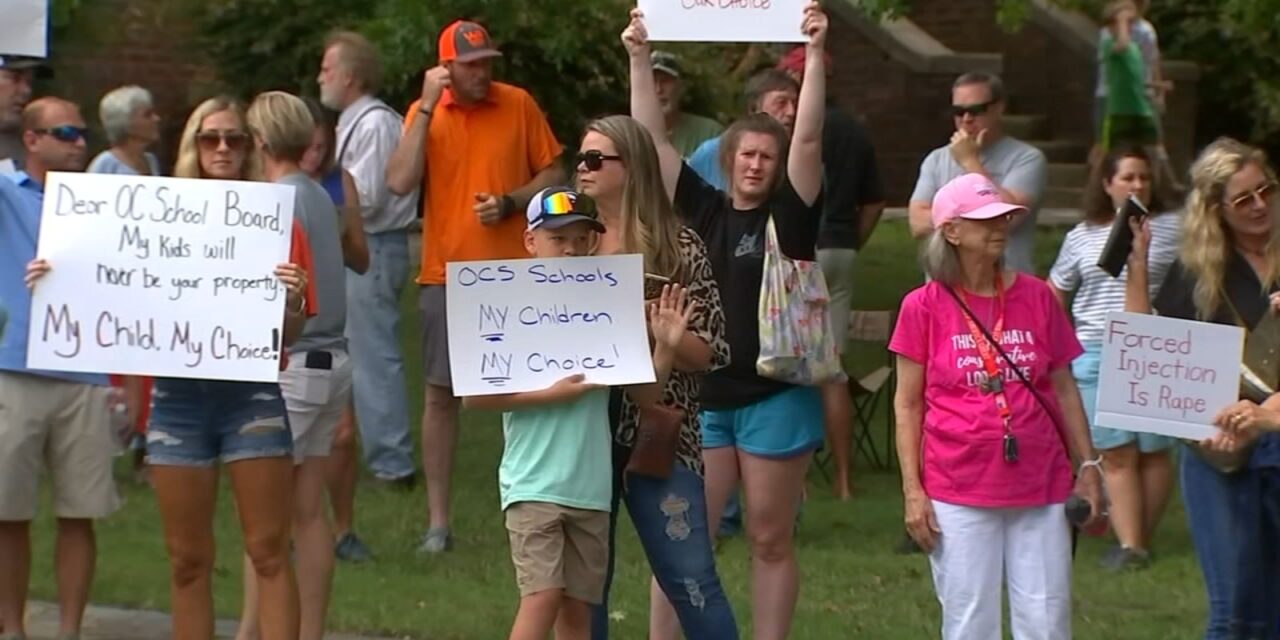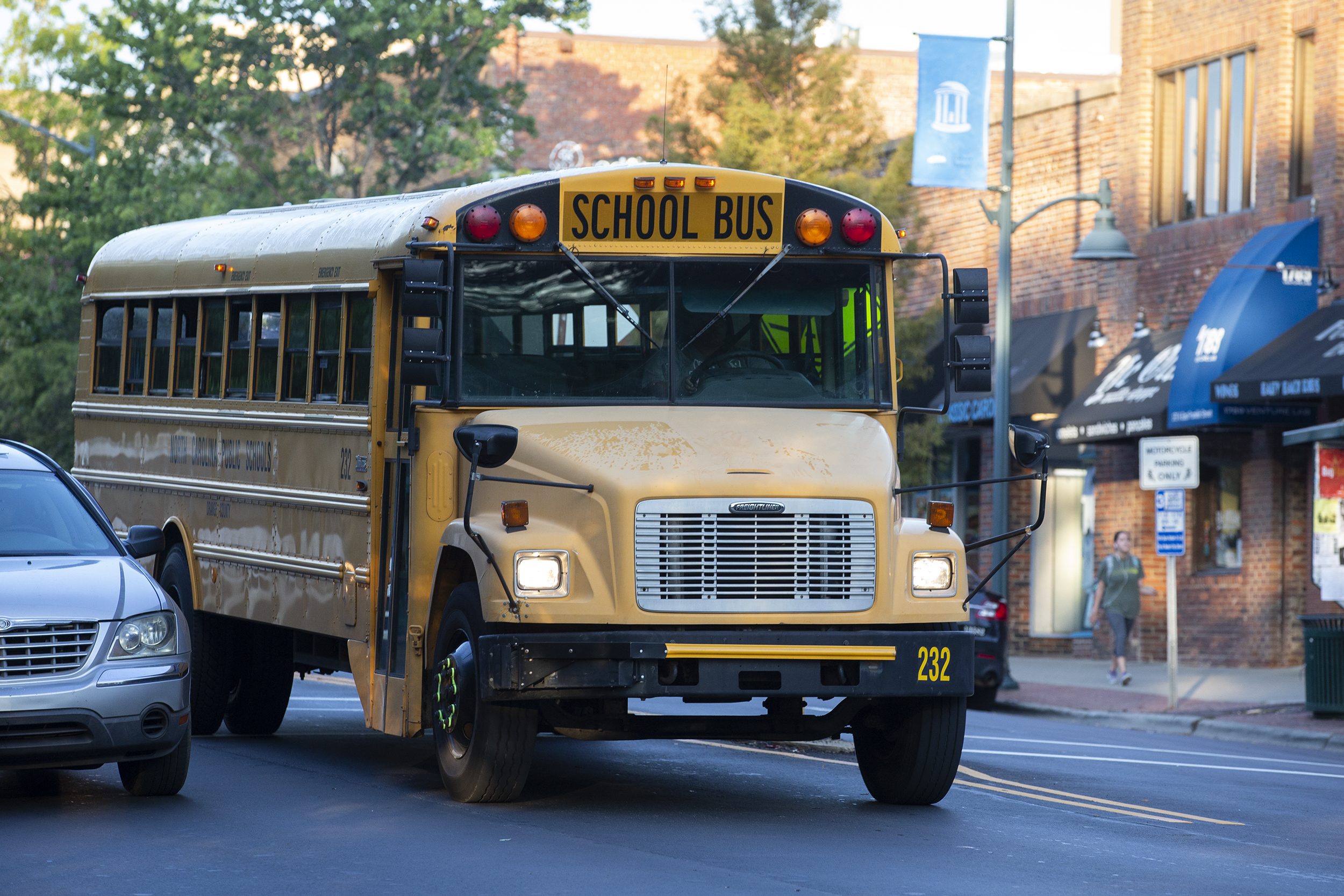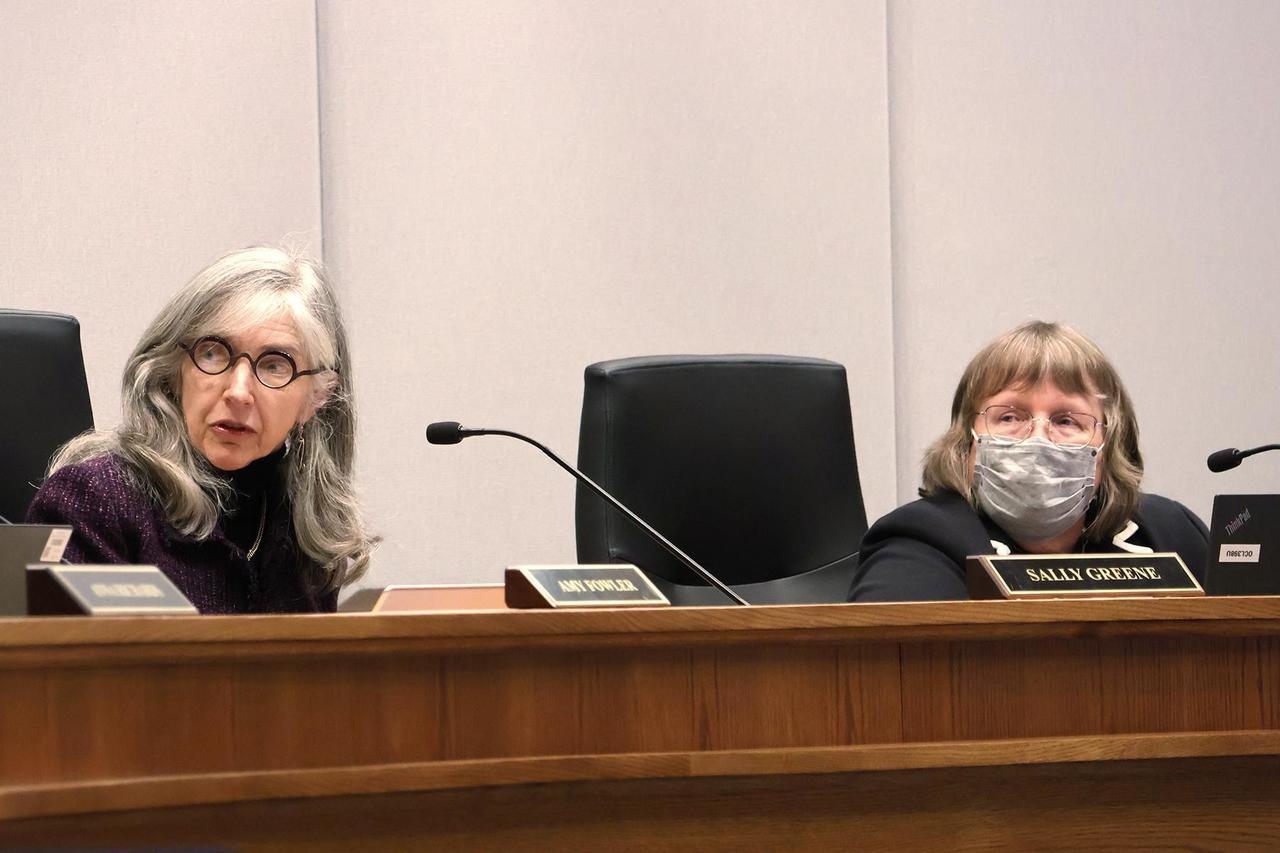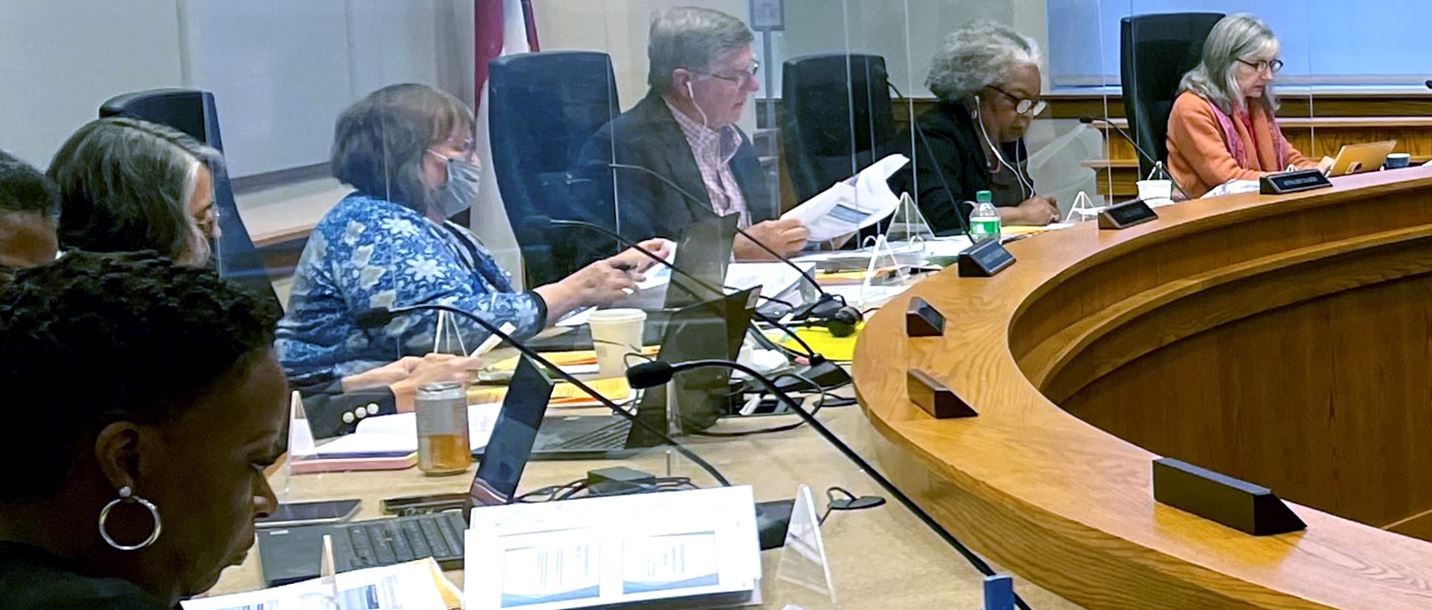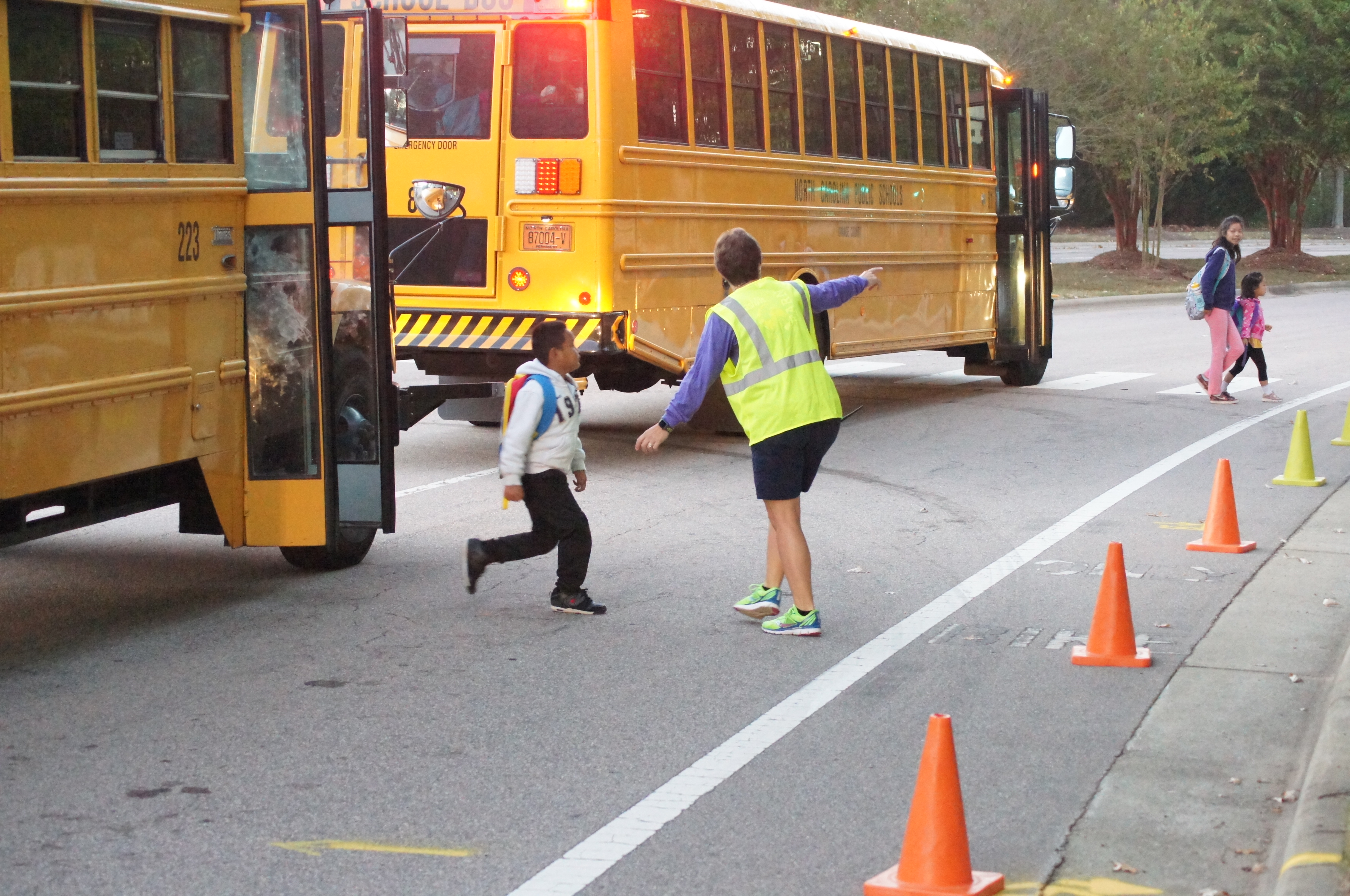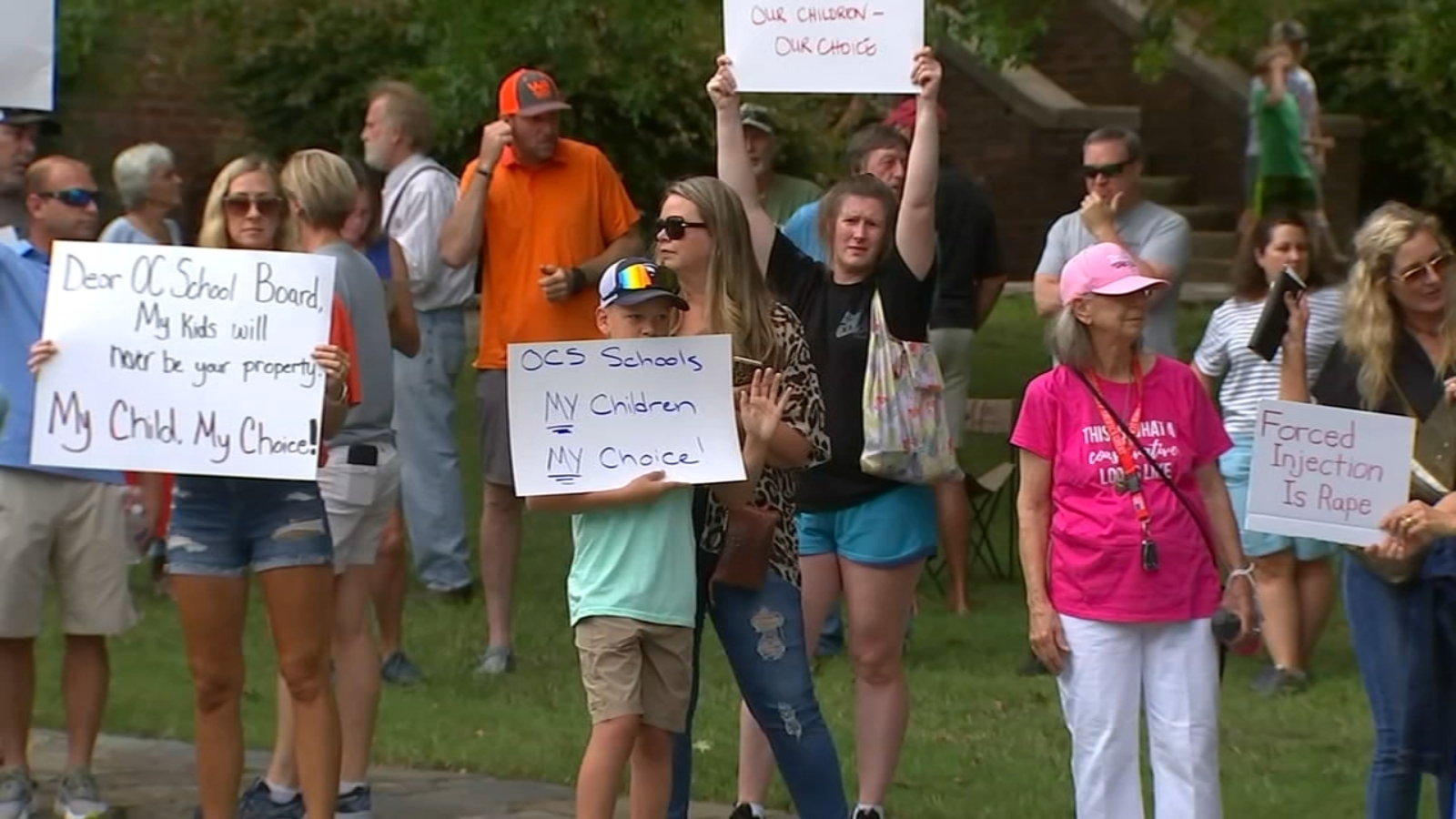An ordinance aiming to regulate picketing near school property — couched as a school safety measure but drew vocal criticism from community members — is not moving forward with the Orange County Commissioners.
The board of commissioners voted 6-1 to defer the proposed ordinance during its work session on Monday, unofficially killing the draft, and approved the creation of a task force to further examine the issue. Vice Chair Jamezetta Bedford was the lone dissenting vote on the ordinance’s future, while the vote for creating a task force was unanimous.
The potential for a county ordinance was requested by the Orange County Schools district in late 2021 following demonstrations on school grounds during school hours and school events. Some school board members expressed concern at the time of threats being made toward them and other community members. District leaders added that some students and teachers shared the protests made them feel uncomfortable or scared while at school, particularly demonstrations involving people wearing gear of the Proud Boys, a hate group that promotes white nationalism.
Orange County Schools Superintendent Monique Felder spoke at the county commissioners’ work session and shared some of those perspectives, keeping student and teacher names anonymous. She indicated the district is approaching its request for a buffer zone as based on school safety, not freedom of speech.
“The issue we present tonight is not with the First Amendment, which we wholeheartedly support,” said Felder. “Rather, it’s with the exercising of that right in very close proximity to schools, especially in the DOT right of way when our children — your children — are still on campus.”

A photo of people in Proud Boys memorabilia, taken on the grounds near Orange High School on September 24, 2021. The incident is one cited by some Orange County Schools community members as making students and staff uncomfortable on school grounds. (Photo via Gwen Frisbie-Fulton.)
The Board of Orange County Commissioners initially advanced a draft ordinance for a reading and discussion in June, with the measure initially suggesting any sort of picketing within 1,000 feet of school property during school hours would qualify as trespassing. While the revised ordinance read by the board Monday changed the distance to a “yet-to-be-determined number of linear feet,” the maximum penalty of the misdemeanor charge remained. The proposal included a provision that enrolled students during school hours would be exempt from punishment, since the schools each have their own sets of rules regarding demonstrations, and that picketing on state and federal grounds is allowed.
Much of the public comment on Monday, however, focused on the ordinance’s potential to hamper free speech. The draft defines picketing and protesting as gathering for a common purpose to promote or object to “a person, policy, political candidate, issue, or action.” School parents and community members said during an hour-long public comment period they believed such a measure would be too vague, challenging to enforce or would infringe on their constitutional rights.
County Attorney John Roberts said while he’d recommend a smaller buffer distance of 50 feet from school entrances and language added to exempt parents who have appointments with educators, the draft ordinance could not be immediately deemed unconstitutional. He said that “every right guaranteed in the Bill of Rights” is indeed subject to some restrictions, citing the example of how one could be punished for yelling “Fire!” in a crowded building.
Roberts added that such restrictions do already exist on school property, even if they weren’t enforced in recent years.
“Protests and demonstrations are not currently allowed on school properties,” said the county’s counsel. “Primarily what this would do is extend that out past the entrances or out into the public right of way. Any protest or pickets on school property now, the participants of [them] would be subject to trespass by the school board.”
Still, some of the county commissioners expressed their own reservations about enacting the ordinance even with changes. Commissioners Sally Greene and Earl McKee each said they felt as if the idea of the ordinance was flawed.
“This is a solution looking for a problem,” McKee said. “I have a real issue trying to reconcile in my own mind whether any other group from any other political or ideological bent would have received the same response.”
Commissioner Jean Hamilton, who was one of the elected officials initially leading the idea for considering a picketing buffer zone, ultimately said she wants more opportunity for discussion between all invested parties before passing a measure.
“I would like to table the ordinance and have a sub-committee of the board — with school staff, our attorney, the sheriff’s office [and public] — to think through all those issues that you’re talking about,” said Hamilton. “It’s hard for me to visualize [the size of a buffer], but on a committee, I’d say let’s walk those grounds so we can literally see what we’re talking about. And [in creating a committee, we would] have a place to also talk through the concerns that our residents have about free speech.”
McKee seconded Hamilton’s motion and urged members of the public to communicate to the commissioners and the task force once it’s established.
“I would encourage those who are in the room tonight, and folks who are not in the room on the other side of the issue, to step up and participate,” he said. “Because, that way, we will get a true gauge of where we need to go and maybe we will avoid some of the unintended consequences and the pitfalls that I see in this and then we can find a path to ensure student safety without imposing on people’s rights.”
If the same draft were to be considered by the Board of Orange County Commissioners again, North Carolina law requires it to pass through two readings by the elected officials with public comment period before being passed. If the deferred proposal is not brought back by the board within 100 days of October 3, the measure will be voided entirely.
Photo via WTVD/ABC 11.
Chapelboro.com does not charge subscription fees, and you can directly support our efforts in local journalism here. Want more of what you see on Chapelboro? Let us bring free local news and community information to you by signing up for our biweekly newsletter.

